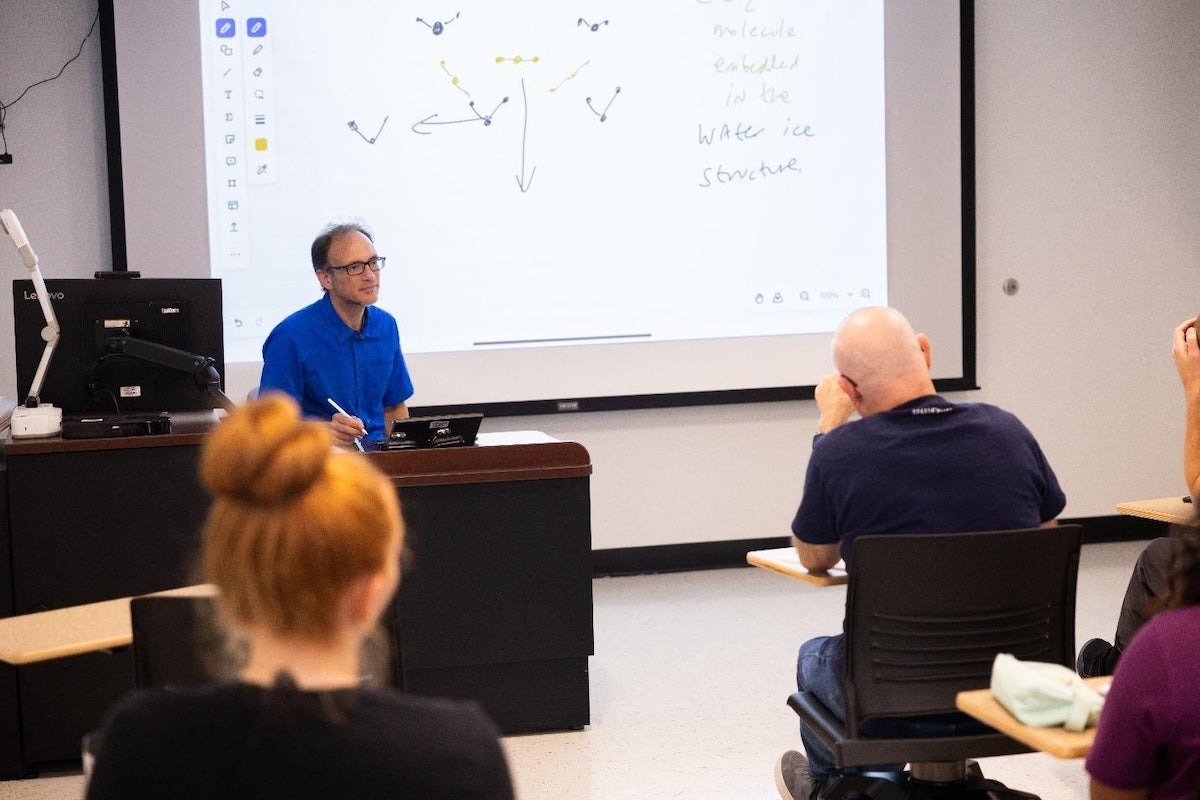UCF Study Finds Microplastics in Florida’s Birds of Prey for First Time
A new study from the University of Central Florida has confirmed and quantified, for the first time, the presence of microplastics in terrestrial and aquatic birds of prey in Florida, including hawks, osprey, and owls.
Microplastics are small plastic pieces – less than the size of a pencil tip – that come from larger pieces of plastic, such as synthetic clothes, or that are made small for use in health and beauty products or industrial purposes.
The research, which was published online recently in the journal Environmental Pollution, is important because birds of prey are critical to a functioning ecosystem. The accumulation of microplastics in their digestive systems could lead to poisoning, starvation, and death.
“Birds of prey are top predators in the ecosystem and by changing the population or health status of the top predator, it completely alters all of the animals, organisms, and habitats below them on the food web,” says Julia Carlin, the study’s lead author and a graduate of UCF’s Department of Biology.
Microplastic contamination of the environment likely began not long after the first piece of plastic was discarded, says Linda Walters, a Pegasus Professor in UCF’s Department of Biology and study co-author.
Ingestion of large pieces of plastic by animals was first noted in the 1960s, and an increased focus on microplastic ingestion started around 2010, she says.
Past studies have documented increasing amounts of microplastics in the guts of fish, marine birds, and filter-feeding invertebrates, such as oysters. There have also been recent reports of whales dying from eating dozens of pounds of plastic, including plastic bags. However, birds of prey have not been thoroughly examined before, partly due to their protected status.
Carlin and Walters were able to overcome this by working with the Audubon Center for Birds of Prey in Maitland, Florida, a rehabilitation center that helps injured raptors.
With the center’s permits, UCF researchers were able to examine the stomach contents of 63 birds that were dead when they arrived at the center or died 24 hours after they arrived. The birds were collected from throughout Central Florida.
Using dissecting microscopes and spectroscopy, the researchers found microplastics in the digestive systems of all birds examined, with nearly 1,200 pieces of plastic pulled from the 63 birds.
The most common types of microplastic in the birds were microfibers, which accounted for 86 percent of the plastics found. Microfibers can come from synthetic ropes or clothing and may end up in ecosystems through wastewater from clothes-washing machines.
Blue and clear microplastics were the most common colors identified, but the reasons for this could range from these being the dominant colors of the plastics in the landscape to birds confusing these colors with appropriate prey or nesting materials, according to the study.
Walters says some solutions to the problem could be removing plastic from open landfills, carefully discarding plastic trash, buying natural fabrics instead of plastic-based ones, and retrofitting water treatment plants and stormwater drains to capture microplastics.
“We have all benefitted from the convenience of plastics, but plastics do not go away once produced,” Walters says.
Study co-authors included Casey Craig, a master’s student in UCF’s Department of Biology; Samantha Little, a raptor-clinic technician with the Audubon Center for Birds of Prey; Melinda Donnelly, an assistant research scientist in UCF’s Department of Biology; David Fox, a doctoral candidate in UCF’s Department of Chemistry; and Lei Zhai, a professor with UCF’s Nanoscience Technology Center and Department of Chemistry.
The research was funded by the National Science Foundation, the Office of Undergraduate Research and the Department of Biology at the University of Central Florida, and the Audubon Center for Birds of Prey.
Carlin is now a doctor of veterinary medicine student at North Carolina State University. She conducted the research as her honors in the major thesis and received the UCF Outstanding Honors in the Major Thesis Award this spring for the project.
Walters has a doctorate in biology from the University of South Carolina and a secondary appointment to UCF’s National Center for Integrated Coastal Research. She joined UCF’s Department of Biology, part of UCF’s College of Sciences, in 1997.
Share This Article

UCF Launches 1st Planetary and Space Sciences PhD Program in Florida
As SpaceU, UCF is pushing the boundaries of exploration by launching a groundbreaking new doctoral program in the planetary and space sciences. Now, aspiring researchers can apply to the inaugural cohort of...
Latest News

UCF Fulbright Awardees Bring Their Passions to a Global Scale
Each year, the Fulbright Program offers opportunities for American students to conduct research, teach English, or pursue graduate study abroad. One of the most prestigious international exchange programs in the...

Unleash Opportunities with a UCF Graduate Degree
A graduate degree has the power to unleash opportunities by expanding careers, opening doors to new fields, and increasing lifetime earnings. According to the U.S. Bureau of Labor Statistics (2024),...

UCF Rosen College Ranks No. 1 in the World for Hospitality Education for 2025
One of the most anticipated theme parks in the world is about to open its gates — and right next door, the No. 1 hospitality and hotel management school on...

From Engineering to Counseling, Graduate Programs Highly Ranked by U.S. News Propel UCF Alumni to Thrive in Career
While pursuing a doctoral degree in aerospace engineering at UCF , Tommy Genova ’20MS ’20PhD worked alongside Professor Kareem Ahmed, one of the world’s foremost researchers in hypersonics and combustion. He played a...